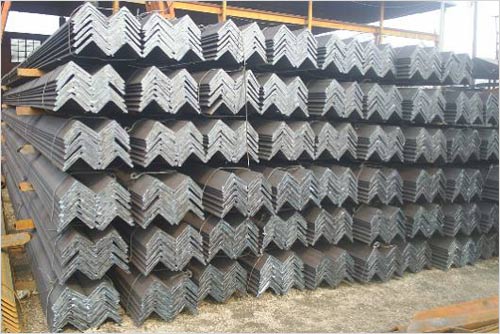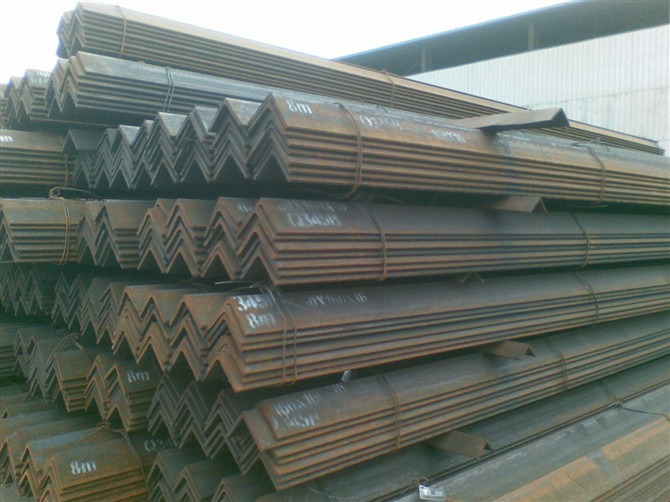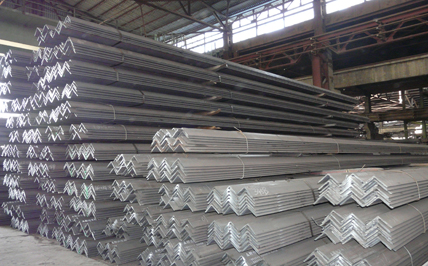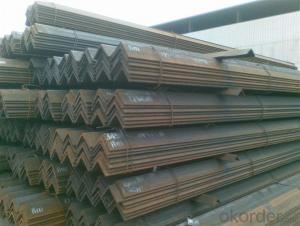equal angle steel/mild steel angle bar/carbon steel angle iron
- Loading Port:
- Tianjin
- Payment Terms:
- TT OR LC
- Min Order Qty:
- 35 m.t.
- Supply Capability:
- 35000 m.t./month
OKorder Service Pledge
OKorder Financial Service
You Might Also Like
equal angle steel/mild steel angle bar/carbon steel angle iron
Products Details:
1.Standard: AISI ASTM BS DIN GB JIS
2.Dimensions:10*10mm-200*200mm
3.Grade:Q195-Q420 Series
4.Place of Origin:Tianjin,China
5.Length:6m 9m 12m or as per request
6.Application:Building structure and engineering structure, such as the beam, Bridges, transmission tower,
lifting transportation machinery, ship, industrial furnace, reaction tower, container frame and warehouse.
7.Technology:Hot Rolled / Cold Rolled
8.Packaging Detail: Mills standard export strong packing
9.Price Term:FOB/CFR/CIF,According to clients requirements
10.Delivery Datail:7-10 Workdays after deposit
11.MOQ:25MT
12.Payment:T/T or LC
13.12.Authentication:ISO9001-2008,SGS.BV
Products Material:
Q195-Q420 Series
SS400-SS540 Series
S235JR-S355JR Series
ST Series
A36-A992 Series
Gr50 Series



- Q:How do steel angles contribute to the overall energy efficiency of a building?
- The overall energy efficiency of a building is enhanced by the use of steel angles in several ways. Firstly, steel angles are commonly employed in constructing building frames and structures, providing the necessary support and stability. By opting for steel angles instead of alternative materials like wood or concrete, the amount of materials needed for construction is reduced, resulting in lower overall energy consumption during the construction phase. Furthermore, steel angles are renowned for their strength and durability, enabling longer spans and fewer support columns. This not only maximizes the usable space within the building but also decreases the requirement for additional heating or cooling systems. By minimizing partitions and obstructions, steel angles facilitate improved airflow and natural lighting, thereby decreasing the energy necessary for artificial lighting and ventilation. Additionally, steel angles can function as a thermal barrier, providing insulation and reducing heat transfer. This aids in maintaining a comfortable indoor temperature throughout the year, cutting down on the reliance on heating and cooling systems and subsequently conserving energy. Moreover, steel angles possess high fire resistance, making them a secure choice for building construction. This diminishes the need for fireproofing materials and systems, resulting in energy savings during both construction and the building's lifespan. Lastly, steel is a highly recyclable material, and steel angles can be recycled at the end of a building's life cycle. By incorporating recycled steel angles into new construction projects, the overall energy consumption and environmental impact can be further decreased. In summary, steel angles contribute to a building's overall energy efficiency by reducing the quantity of materials required during construction, optimizing space utilization, enhancing natural lighting and ventilation, providing thermal insulation, ensuring fire safety, and promoting the use of recyclable materials.
- Q:What are the different types of connections used for steel angles in marine applications?
- In marine applications, the different types of connections used for steel angles include bolting, welding, and adhesives. Bolting involves using bolts and nuts to secure the angles together, providing a strong and easily disassembled connection. Welding involves melting the steel angles together, creating a permanent and reliable connection. Adhesives, such as epoxy or polyurethane, are also used to bond the steel angles, offering a lighter weight and corrosion-resistant connection. Each type of connection has its advantages and suitability depending on the specific marine application and requirements.
- Q:What are the different connections used with steel angles?
- There are several different connections that can be used with steel angles, including bolted connections, welded connections, and clip connections. Bolted connections involve using bolts and nuts to connect the angles to other structural members. Welded connections involve fusing the angles to the other members using a welding process. Clip connections involve using clips or brackets to secure the angles to the other members. The choice of connection depends on factors such as the load requirements, design specifications, and fabrication capabilities.
- Q:What are the different manufacturing processes for steel angles?
- Some of the different manufacturing processes for steel angles include hot rolling, cold rolling, and extrusion.
- Q:What are the weight per meter calculations for steel angles?
- The weight per meter calculations for steel angles depend on the dimensions of the angle and the density of the steel being used. To calculate the weight per meter of a steel angle, you need to know the dimensions of the angle, specifically the thickness, width, and length. The formula to calculate the weight per meter is: Weight per meter = (Thickness x Width x Length) x Density The density of steel varies depending on the type of steel being used. The most common type of steel used for angles is mild steel, which has a density of approximately 7.85 grams per cubic centimeter (g/cm³) or 7850 kilograms per cubic meter (kg/m³). For example, let's say we have a steel angle with a thickness of 10 millimeters (mm), a width of 100 mm, and a length of 1 meter (1000 mm). Using the formula and assuming a density of 7850 kg/m³, the weight per meter would be: Weight per meter = (10 mm x 100 mm x 1000 mm) x 7850 kg/m³ Weight per meter = 10,000,000 mm³ x 7850 kg/m³ Weight per meter = 78,500,000,000 mm³/kg To convert the weight to a more common unit, we can divide by 1,000,000 to get the weight per meter in kilograms: Weight per meter = 78,500,000,000 mm³/kg / 1,000,000 Weight per meter = 78,500 kg/m Therefore, the weight per meter of this steel angle would be 78,500 kilograms.
- Q:Can steel angles be used in the construction of government buildings?
- Yes, steel angles can be used in the construction of government buildings. Steel angles are commonly used in construction due to their strength, durability, and versatility. They are often used for structural support, framing, and reinforcement in various building projects, including government buildings.
- Q:What are the different surface finishes available for painted steel angles?
- There are several different surface finishes available for painted steel angles, depending on the desired aesthetic and functional requirements. 1. Smooth finish: This is the most common surface finish and provides a smooth and even appearance. It is achieved by applying a coat of paint evenly over the steel surface, followed by a curing process to ensure durability. 2. Textured finish: Textured finishes provide a rougher surface with a pattern or texture. This can be achieved through different techniques such as sandblasting or using textured paint. Textured finishes can enhance the grip and make the steel angle less slippery, making it suitable for applications where traction is important. 3. Matte finish: A matte finish has a low sheen or gloss level, resulting in a non-reflective surface. This finish is often preferred for applications where a more subdued appearance is desired. 4. Glossy finish: A glossy finish, on the other hand, has a high sheen or gloss level, providing a reflective and shiny surface. It can give a more polished and visually appealing look to the painted steel angle. 5. Powder-coated finish: Powder coating is a popular method for providing a durable and long-lasting surface finish. The steel angle is first coated with a dry powder, which is then cured under heat to form a hard and protective layer. Powder-coated finishes offer excellent resistance to scratches, chemicals, and UV rays. 6. Galvanized finish: Galvanization is a process in which a layer of zinc is applied to the steel surface, providing corrosion resistance. While galvanized steel angles are not typically painted, they can be painted over if desired, allowing for various color options. In summary, the different surface finishes available for painted steel angles include smooth, textured, matte, glossy, powder-coated, and galvanized finishes. The choice depends on the intended use, desired appearance, and the level of durability required for the application.
- Q:What are the different types of steel angles used in bridge construction?
- Bridge construction commonly utilizes various types of steel angles that serve vital roles in providing structural support and stability to the bridge. 1. Equal Leg Angles, also referred to as L-shaped angles, possess two legs of equal length forming a 90-degree angle. These angles support and reinforce the bridge components during construction. 2. Unequal Leg Angles, as implied, have two legs of different lengths forming a 90-degree angle. These angles are frequently employed in bridge construction to accommodate specific design requirements and support varying loads. 3. Bulb Angles are unique angles characterized by a bulb-shaped leg. They enhance the strength and rigidity of the bridge structure, particularly in areas expected to experience high stress or heavy loads. 4. Inverted Angles are similar to equal leg angles, but their orientation is inverted, with the longer leg positioned at the bottom. These angles provide additional support and stability, especially when the bridge must withstand lateral forces. 5. Fillet Welded Angles are angles joined together using fillet welds. Their purpose in bridge construction is to establish robust and durable connections between different bridge components, ensuring structural integrity and stability. Each steel angle type possesses distinct properties and advantages, rendering them suitable for specific applications in bridge construction. The selection of the appropriate angle type depends on factors such as load requirements, span length, design specifications, and structural considerations. Professional engineers and designers diligently evaluate these factors to determine the most suitable steel angle for a given bridge construction project.
- Q:Can steel angles be drilled or punched for fastening?
- Fastening steel angles is possible through drilling or punching. These angles are commonly utilized in the construction and manufacturing industries due to their structural strength and versatility. To attach steel angles to other materials or join them together, the most common method is to drill or punch holes. Drilling involves the use of a drill bit to create precise holes in steel angles. This method is suitable when the angle needs to be attached to a specific location. The drilling process can be performed manually or with the assistance of drilling machines, depending on the project's scale. On the other hand, punching involves the use of a punch and die set to create holes in steel angles. This method is faster and more efficient, especially when dealing with large quantities of angles. Punching machines can create holes of different sizes and shapes, making it suitable for various fastening requirements. Once the holes are drilled or punched, fastening can be achieved using bolts, screws, or rivets. These fasteners are inserted through the holes and tightened to securely hold the steel angles together or attach them to other materials. The choice of fastening method depends on the specific application and load requirements. To summarize, drilling or punching holes in steel angles is a viable option for fastening. Whether it's attaching steel angles to other materials or joining them together, drilling or punching provides reliable and secure fastening solutions for construction and manufacturing projects.
- Q:How are steel angles installed on concrete structures?
- Steel angles are typically installed on concrete structures using anchor bolts. These anchor bolts are drilled into the concrete and then the steel angles are placed over these bolts. Nuts and washers are then tightened onto the anchor bolts to secure the steel angles in place.
1. Manufacturer Overview |
|
|---|---|
| Location | |
| Year Established | |
| Annual Output Value | |
| Main Markets | |
| Company Certifications | |
2. Manufacturer Certificates |
|
|---|---|
| a) Certification Name | |
| Range | |
| Reference | |
| Validity Period | |
3. Manufacturer Capability |
|
|---|---|
| a)Trade Capacity | |
| Nearest Port | |
| Export Percentage | |
| No.of Employees in Trade Department | |
| Language Spoken: | |
| b)Factory Information | |
| Factory Size: | |
| No. of Production Lines | |
| Contract Manufacturing | |
| Product Price Range | |
Send your message to us
equal angle steel/mild steel angle bar/carbon steel angle iron
- Loading Port:
- Tianjin
- Payment Terms:
- TT OR LC
- Min Order Qty:
- 35 m.t.
- Supply Capability:
- 35000 m.t./month
OKorder Service Pledge
OKorder Financial Service
Similar products
New products
Hot products
Related keywords




























